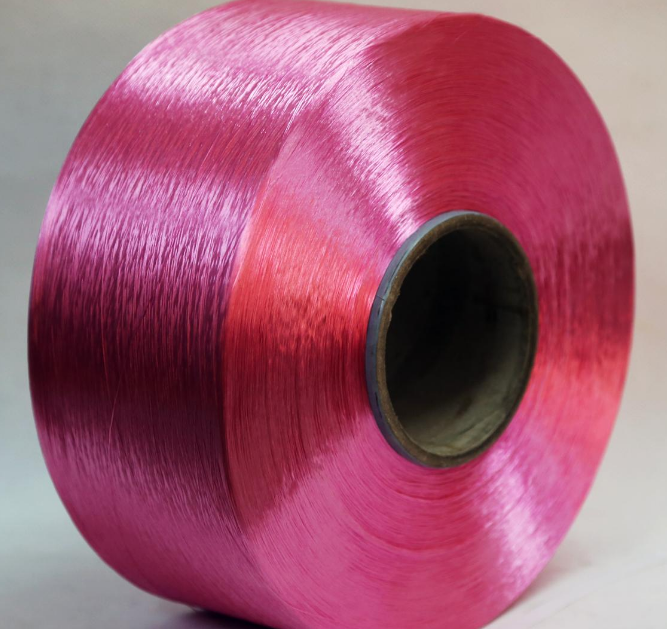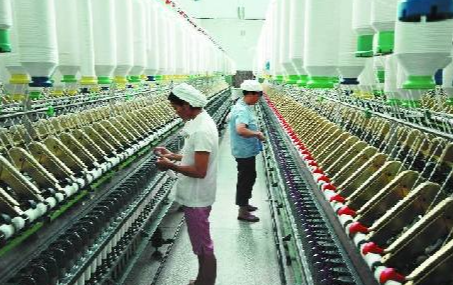Textile industry "14th Five-Year" scientific and technological development guidance
The textile standard system has been further optimized, and a new standard system with coordinated development and coordination between government-led standards and standards independently developed by the market has taken shape. The number of mandatory textile standards was reduced from 46 to 2, 800 recommended national standards and industry standards were revised, and a number of key standards in the fields of textile safety, functional textiles, ecological textiles, high-performance industrial textiles, green design products, energy conservation and emission reduction, and textile equipment were published and implemented. Textile group standards have developed rapidly, more than 50 textile social groups have been registered on the national group standards information platform, and more than 600 textile group standards have been issued, including 78 China Textile Association group standards; Actively promote the joint consultation, joint construction and sharing of international standards, the international standardization capacity has been continuously enhanced, led the proposal of 16 international standards (ISO), and led the formulation and implementation of 15 international standards by ISO; China has completed the translation of more than 40 national standards in foreign languages to facilitate the interconnection of national standards along the Belt and Road.

6. Steady progress has been made in the construction of scientific and technological innovation platforms
During the "13th Five-Year Plan" period, the industry's increasing investment in science and technology has greatly improved the basic conditions for scientific research, forming a complete scientific research condition including the National manufacturing innovation Center, the State key laboratory, the National Engineering Research Center (National Engineering Laboratory), the national enterprise technology center, the key laboratory of the textile industry, and the textile industry technology innovation center. By the end of 2020, there will be 2 national manufacturing innovation centers, 6 state key laboratories, 2 national engineering research centers, and 81 national enterprise technology centers (including 5 sub-centers) in the textile industry. There are 59 key laboratories and 37 technological innovation centers identified by the China Textile Industry Federation, which basically cover the key areas of the future development of the textile industry, and the scientific research hardware facilities of the textile industry have been continuously improved.
(2) Major problems in the development of science and technology
At present, China's textile industry has entered a stage of high-quality development, the level of scientific and technological innovation capacity is still insufficient compared with the requirements of the new development pattern, and there are still some problems to be solved in terms of independent innovation capacity, research and development investment intensity, results transformation effectiveness, talent team construction, innovation system and mechanism, which are mainly manifested in: Innovation ability in key areas is not strong, and some key core technologies are subject to others; The intensity of investment in scientific research is insufficient, and there are too few major original innovations. The synergy efficiency of R&D and application industry chain is low, and the industrialization process of achievement transformation is slow; The boundary between government-led standards and market-based standards is not clear, and some group standards are homogenized. There are few leading talents in science and technology and insufficient incentive mechanism for talents. The innovation system and mechanism are not perfect, and the innovation efficiency needs to be improved. To solve these problems, it is necessary to further optimize the textile science and technology innovation ecology, carry out research on the key core technologies in the basic and strategic fields, train a large number of scientific and technological talents with advanced levels, smooth the transformation chain of scientific and technological achievements, and use international innovation resources, so as to realize the systematic improvement of the scientific and technological innovation ability of the textile industry.
Second, the "14th Five-Year Plan" scientific and technological work guiding ideology and development goals
(1) Guiding ideology
Grasp the new trend of scientific and technological innovation and development of the industry, comprehensively improve the supply capacity, quality and efficiency of scientific and technological innovation, and promote the high-quality development of the textile industry.
2. Development goals
During the "14th Five-Year Plan" period, the development of textile industry science and technology will achieve the following main goals:

1. R&d expenditure of enterprises above designated size accounted for 1.3% of the main business income.
2. The textile industry has identified 70 key laboratories, 50 technological innovation centers, and 3-5 scientific and technological achievements transformation centers.
- EMERSON
- Honeywell
- CTI
- Rolls-Royce
- General Electric
- Woodward
- Yaskawa
- xYCOM
- Motorola
- Siemens
- Rockwell
- ABB
- B&R
- HIMA
- Construction site
- electricity
- Automobile market
- PLC
- DCS
- Motor drivers
- VSD
- Implications
- cement
- CO2
- CEM
- methane
- Artificial intelligence
- Titanic
- Solar energy
- Hydrogen fuel cell
- Hydrogen and fuel cells
- Hydrogen and oxygen fuel cells
- tyre
- Chemical fiber
- dynamo
- corpuscle
- Pulp and paper
- printing
- fossil
- FANUC
- Food and beverage
- Life science
- Sewage treatment
- Personal care
- electricity
- boats
- infrastructure
- Automobile industry
- metallurgy
- Nuclear power generation
- Geothermal power generation
- Water and wastewater
- Infrastructure construction
- Mine hazard
- steel
- papermaking
- Natural gas industry
- Infrastructure construction
- Power and energy
- Rubber and plastic
- Renewable energy
- pharmacy
- mining
- Plastic industry
- Schneider
- Kongsberg
- NI
- Wind energy
- International petroleum
- International new energy network
- gas
- WATLOW
- ProSoft
- SEW
- wind
- ADVANCED
- Reliance
- YOKOGAWA
- TRICONEX
- FOXBORO
- METSO
- MAN
- Advantest
- ADVANCED
- ALSTOM
- Control Wave
- AB
- AMAT
- STUDER
- KONGSBERG
- MOTOROLA
- DANAHER MOTION
- Bently
- Galil
- EATON
- MOLEX
- Triconex
- DEIF
- B&W
- ZYGO
- Aerotech
- DANFOSS
- KOLLMORGEN
- Beijer
- Endress+Hauser
- MOOG
- KB
- Moxa
- Rexroth
- YAMAHA
- Johnson
- Westinghouse
- WAGO
- TOSHIBA
- TEKTRONIX


Email:wang@kongjiangauto.com



































































































































